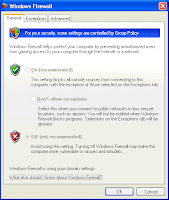sudo fdisk -l
The utility, "shred", is native to Ubuntu so you don't need to download and install another tool. The "-n" switch is used to specify how many times to overwrite and the default is 25. I define "/dev/urandom" as the source of data to overwrite my portable drive. A word of caution... wiping using random data instead of 0s is time consuming.
shred -n 1 --random-source=/dev/urandom /dev/sdb1 -v
Alternatively, the "dd" command can be used to wipe too. The disadvantage of "dd" is that it doesn't provide verbose information and thus you can't track the status of the wipe.
sudo dd if=/dev/urandom of=/dev/sdb1
I found an enhanced version of "dd" that is called "dcfldd". It is better than "dd" because it displays its progress while executing.
sudo dcfldd if=/dev/urandom of=/dev/sdb1
Substitute "urandom" with "zero" if you opt to overwrite with 0s. Zeroing out drives is the faster option with less overhead.
sudo dcfldd if=/dev/urandom of=/dev/sdb1
Substitute "urandom" with "zero" if you opt to overwrite with 0s. Zeroing out drives is the faster option with less overhead.





